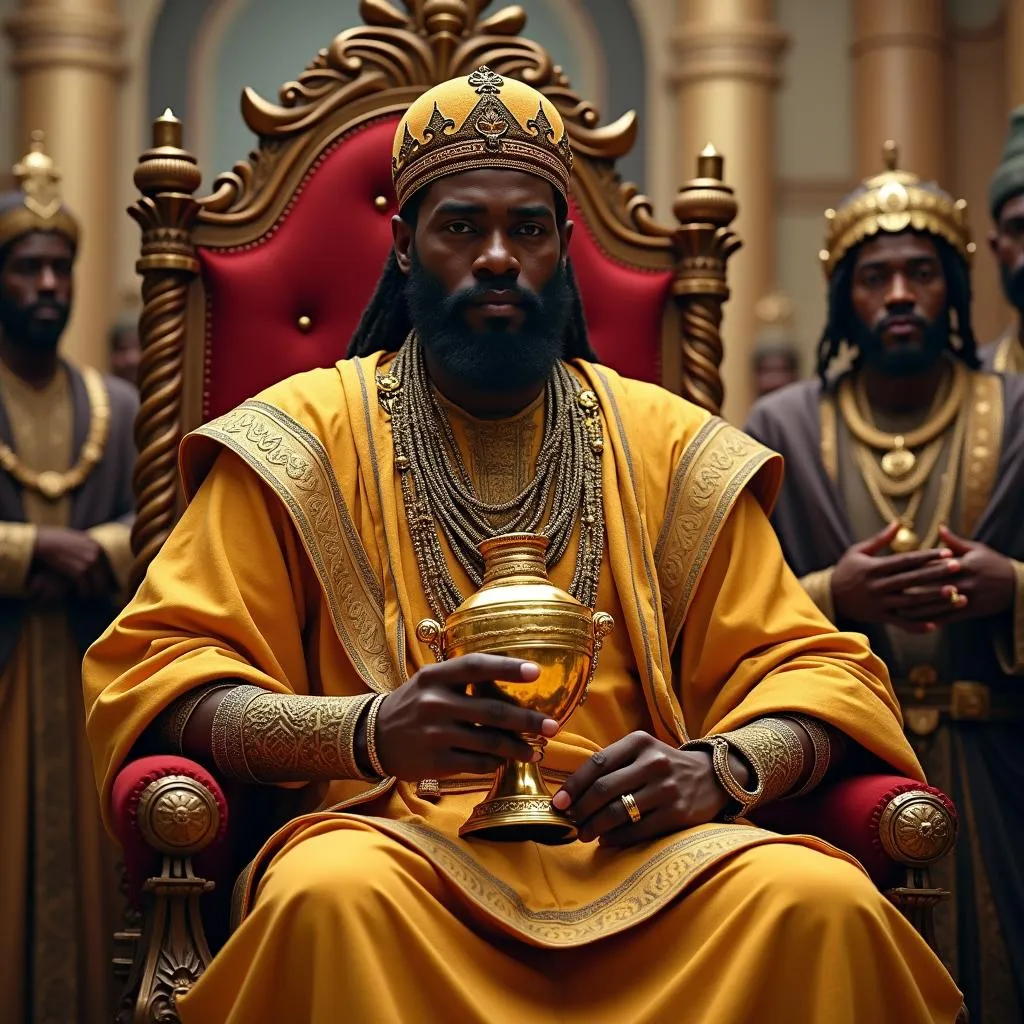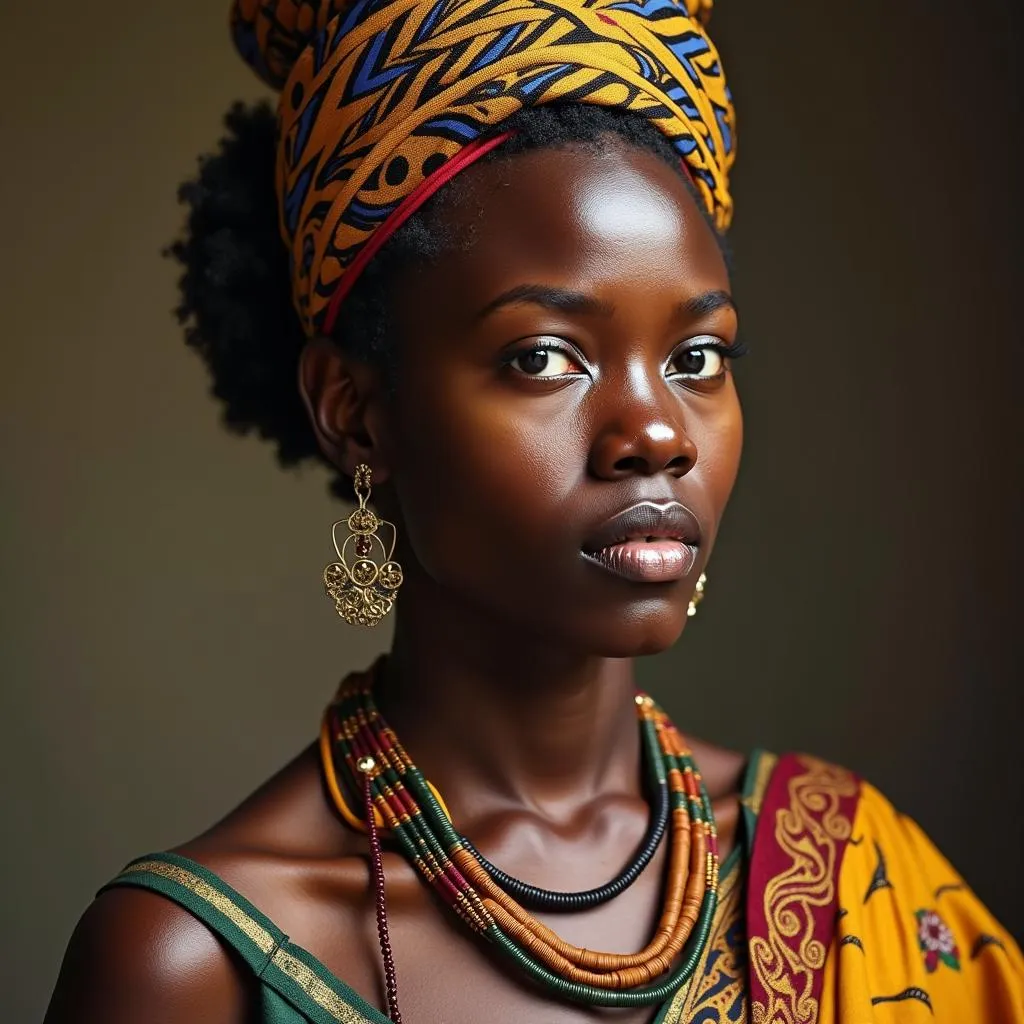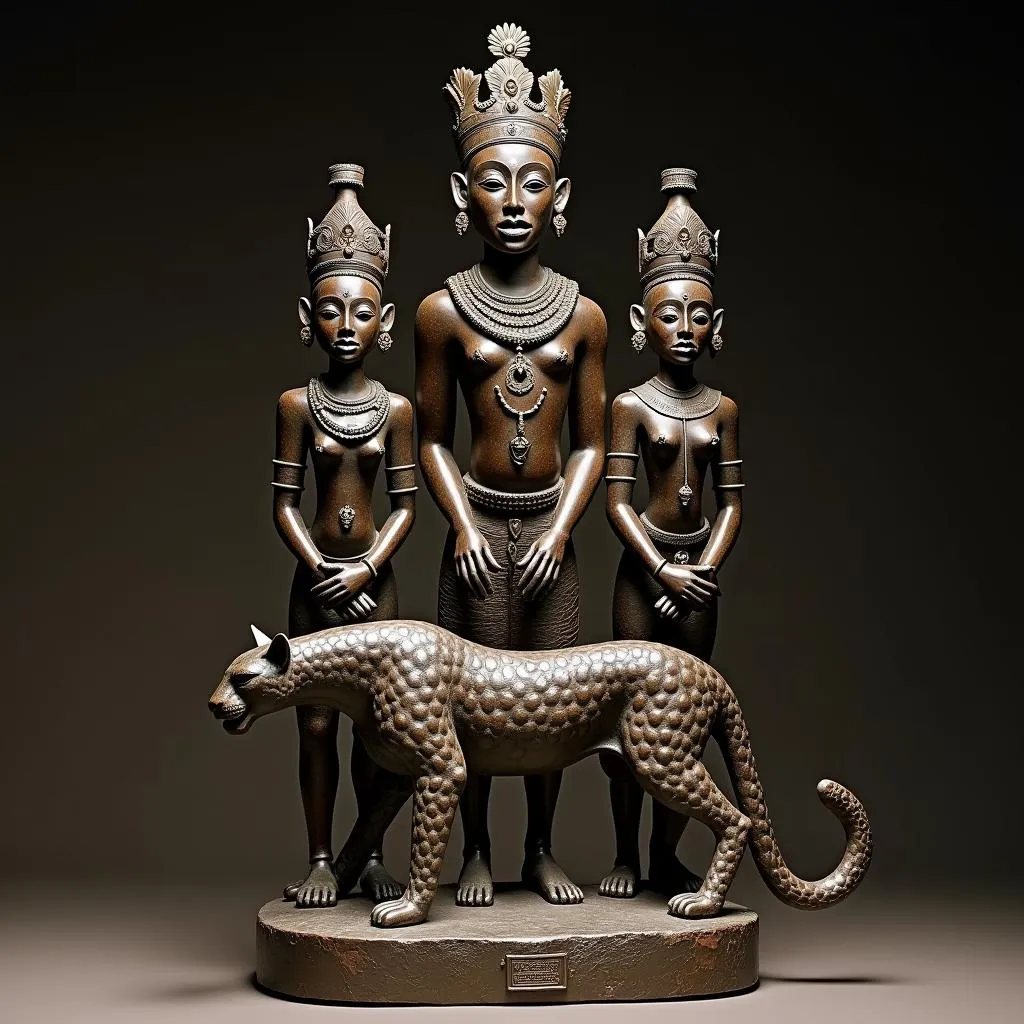African Kings and Queens Pictures: A Glimpse into Royal History
African Kings And Queens Pictures offer a captivating glimpse into the continent’s rich history, showcasing the power, splendor, and cultural significance of these monarchs. From the ancient empires of Ethiopia to the powerful kingdoms of West Africa, these images provide a unique perspective on the lives and legacies of these rulers.
Exploring the Majesty: Pictures of African Kings
Pictures of African kings are more than just portraits; they are historical documents that capture the essence of leadership, tradition, and authority. These images often depict kings adorned in elaborate regalia, reflecting their status and the cultural aesthetics of their kingdoms. The poses, often powerful and commanding, speak volumes about their roles as leaders and protectors of their people.
For example, images of Shaka Zulu, the legendary king of the Zulu people, often portray him in battle attire, highlighting his military prowess and strategic brilliance. Similarly, depictions of Mansa Musa, the famed ruler of the Mali Empire, often showcase his immense wealth and influence, emphasizing his role in establishing Timbuktu as a center of trade and scholarship.
 Mansa Musa, African King
Mansa Musa, African King
The Elegance and Influence of African Queens Pictures
Pictures of African queens offer a nuanced perspective on power dynamics, showcasing women who held significant political, social, and religious influence. These images challenge stereotypical narratives, revealing the diverse roles women played in shaping African societies.
The iconic photographs of Queen Yaa Asantewaa of the Ashanti Empire, for instance, continue to inspire generations with her bravery and leadership in the resistance against British colonialism. Similarly, images of Queen Nzinga Mbande of Ndongo and Matamba in present-day Angola highlight her strategic brilliance and diplomatic skills in navigating complex political landscapes.
 Yaa Asantewaa, Ashanti Queen
Yaa Asantewaa, Ashanti Queen
Beyond the Frame: Understanding the Context
While African kings and queens pictures are visually compelling, understanding their historical and cultural contexts is essential for a deeper appreciation. These images often embody symbolic meanings, reflecting religious beliefs, social structures, and artistic traditions prevalent during their time.
For example, the recurring motif of a leopard in Benin bronzes, often associated with the Oba or king, signifies the ruler’s power and connection to the spiritual realm. Similarly, the intricate beadwork and hairstyles depicted in portraits of Yoruba monarchs convey messages about lineage, status, and social hierarchy.
 Benin Bronze Depicting an African King with a Leopard
Benin Bronze Depicting an African King with a Leopard
The Legacy of African Royalty in Pictures
African kings and queens pictures serve as invaluable resources for understanding the continent’s complex history and the enduring legacy of its monarchs. These images not only document the lives of these rulers but also offer insights into the social, political, and cultural landscapes they shaped.
By studying these images and engaging with their historical contexts, we can gain a deeper appreciation for the diversity and richness of African history, recognizing the significant contributions of these kings and queens in shaping the continent’s past, present, and future.

